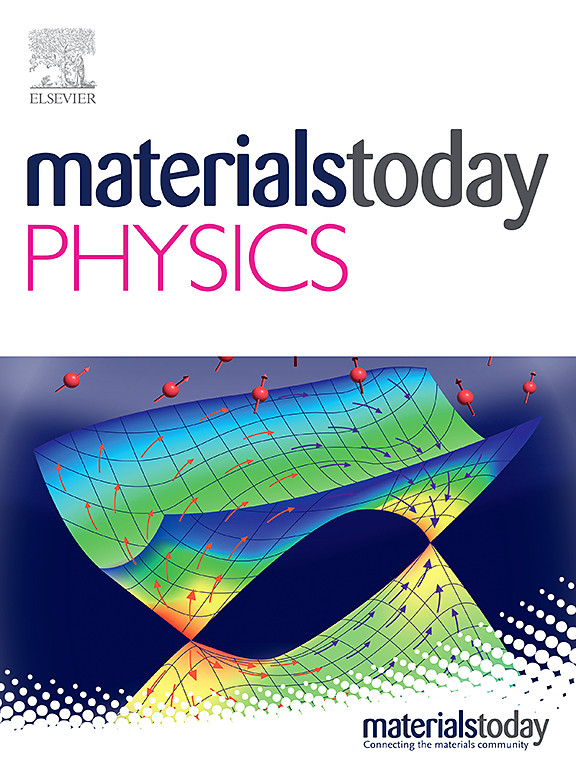镍替代 Y 型 Sr2Zn2-xNixFe12O22 六元晶中的反向和常规双磁效应
IF 10
2区 材料科学
Q1 MATERIALS SCIENCE, MULTIDISCIPLINARY
引用次数: 0
摘要
研究了在 Sr2Zn2-xNixFe12O22(x = 0.0、0.8 和 2.0)的多晶 Y 型六元晶中镍替代对磁性和磁致效应(MCE)的影响。随着温度的升高,M-T 曲线表明在 Sr2Zn2-xNixFe12O22(x = 0.0、0.8 和 2.0)中存在连续的磁结构转变,这些转变在 MCE 行为中起着重要作用。随着 Ni2+ 掺杂比的增加,-ΔSM-T 曲线在室温附近的形状逐渐从台状演变成峰状。特别是在 100 K 以下,CMCE 和 IMCE 之间出现了明显的反差,其特性可在磁制冷应用中作为散热器加以利用。在该系列样品中,Sr2Zn1.2Ni0.8Fe12O22 的 CMCE 和 IMCE 性能最佳,在 ΔH=50kOe 时,其在 354 K 和 16 K 的最大磁熵变化(-ΔSMmax)值分别为 0.78 J/kg K 和 -0.56 J/kg K。我们的工作表明,Sr2Zn2-xNixFe12O22 六价铁氧体具有巨大的潜力,可根据不同的工作温度区、制冷时的爱立信循环或散热器等特殊需求定制磁制冷。本文章由计算机程序翻译,如有差异,请以英文原文为准。

Inverse and conventional dual magnetocaloric effects in Ni substituted Y-type Sr2Zn2-xNixFe12O22 hexaferrites
The effects of Ni substitution on magnetic and magnetocaloric effect (MCE) are investigated in polycrystalline Y-type hexaferrites of Sr2Zn2-xNixFe12O22 (x = 0.0, 0.8, and 2.0). With the increasing of temperature, the M-T curves indicate successive magnetic structure transitions exist in Sr2Zn2-xNixFe12O22 (x = 0.0, 0.8, and 2.0), which play significant roles in MCE behaviors. As the Ni2+ doping ratio increases, the shape of curves near room temperature evolves gradually from a table-like to a peak-like form. Particularly, a significant contrast between CMCE and IMCE is observed below 100 K, whose behavior can be inherently exploited for heat sink in magnetic refrigeration applications. Among the samples in this series, Sr2Zn1.2Ni0.8Fe12O22 plays the best CMCE and IMCE performances, with the maximum magnetic entropy change () values of 0.78 J/kg K at 354 K and −0.56 J/kg K at 16 K for , respectively. Our work demonstrates that Sr2Zn2-xNixFe12O22 hexaferrites have great potential to be tailored for magnetic refrigeration with special needs such as different operating temperature zones, Ericsson cycle or heat sink at refrigeration.
求助全文
通过发布文献求助,成功后即可免费获取论文全文。
去求助
来源期刊

Materials Today Physics
Materials Science-General Materials Science
CiteScore
14.00
自引率
7.80%
发文量
284
审稿时长
15 days
期刊介绍:
Materials Today Physics is a multi-disciplinary journal focused on the physics of materials, encompassing both the physical properties and materials synthesis. Operating at the interface of physics and materials science, this journal covers one of the largest and most dynamic fields within physical science. The forefront research in materials physics is driving advancements in new materials, uncovering new physics, and fostering novel applications at an unprecedented pace.
 求助内容:
求助内容: 应助结果提醒方式:
应助结果提醒方式:


